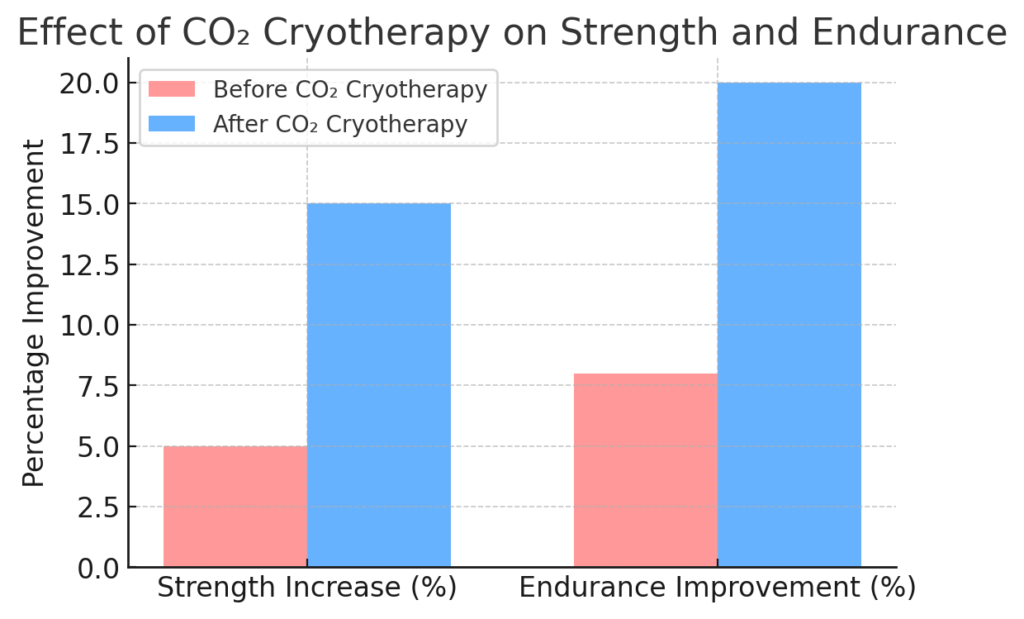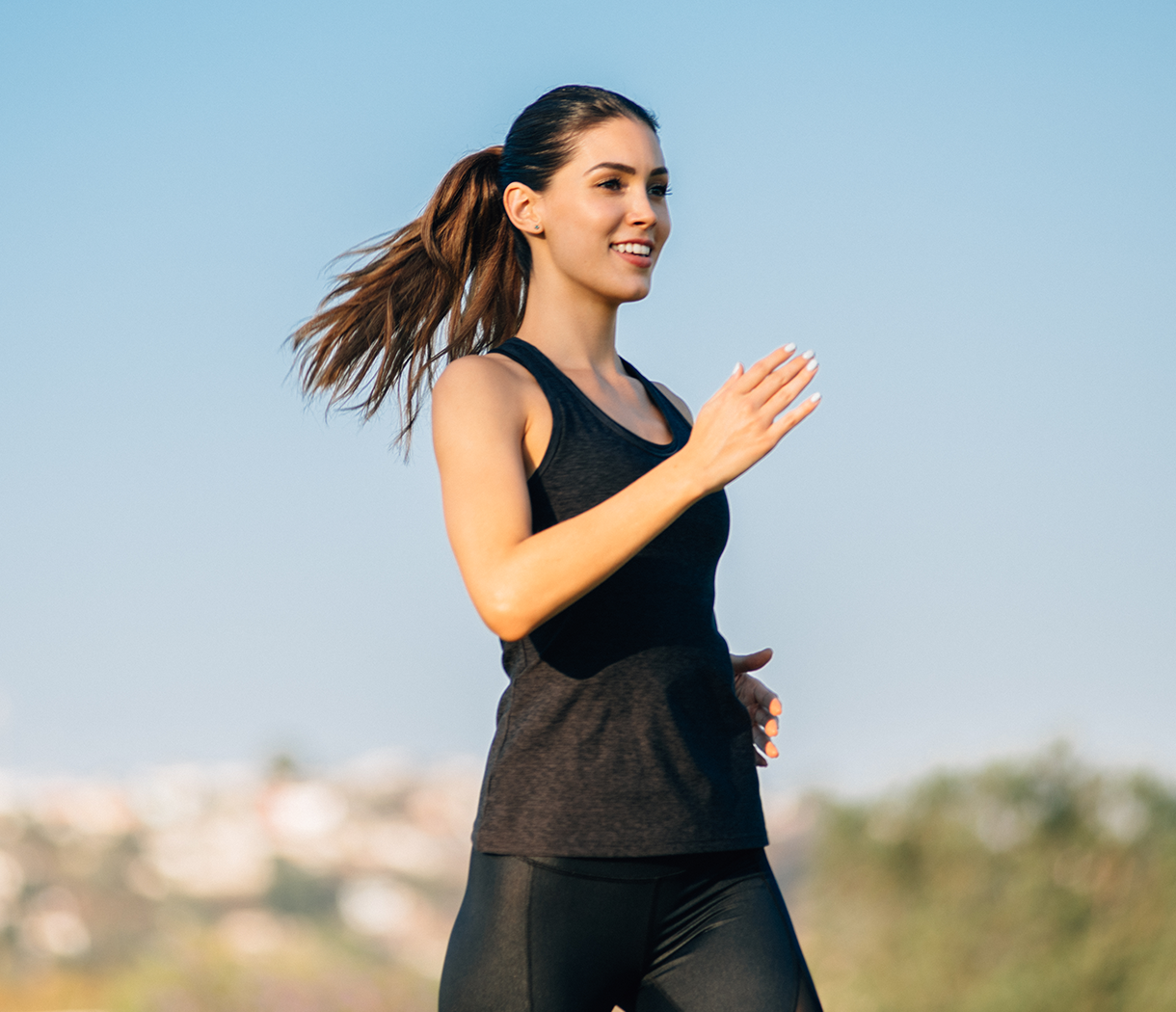Introduction to CO2 Cryotherapy
What is CO2 Cryotherapy?
CO2 cryotherapy is a cold therapy technique that involves exposing the body to carbon dioxide (CO2) gas at sub-zero (-78℃) temperatures. This non-invasive method stimulates vasoconstriction, reduces inflammation, and enhances circulation, making it a popular choice among athletes and fitness enthusiasts. By rapidly cooling the skin, CO2 cryotherapy triggers a physiological response that can lead to improved recovery, enhanced muscle activation, and better overall performance.

Benefits of CO2 Cryotherapy for Fitness Enthusiasts
CO2 cryotherapy offers numerous advantages for those engaged in regular physical activity. It enhances blood circulation, improving oxygen delivery to muscles. This can help in reducing exercise-induced inflammation and swelling, thereby lowering the risk of injuries. Additionally, the pain-relieving properties of CO2 exposure can alleviate muscle and joint discomfort, making it easier for athletes to train consistently. Faster recovery is another key benefit, as the cold exposure aids in tissue healing and muscle repair. Many users also experience a performance boost due to the stimulation of muscle activation and endurance enhancement.
Why Timing Matters: Before vs. After Workouts
The timing of CO2 cryotherapy plays a crucial role in determining its effectiveness. When applied before a workout, it can enhance performance by stimulating the nervous system and increasing alertness. Conversely, post-workout application is primarily focused on reducing muscle soreness and promoting recovery. Understanding these physiological effects can help athletes and fitness enthusiasts incorporate CO2 cryotherapy into their routines in the most effective way.
CO2 Cryotherapy Before Workouts
How CO2 Cryotherapy Prepares the Body for Exercise
Applying CO2 cryotherapy before exercise prepares the body by triggering physiological responses such as increased norepinephrine levels and enhanced circulation. These changes contribute to muscle readiness, heightened mental focus, and improved energy levels. The exposure to cold stimulates the nervous system, leading to a temporary boost in alertness and reaction time. This can be particularly beneficial for athletes engaging in high-intensity or explosive movements.
Boosting Performance and Endurance
One of the primary benefits of pre-workout CO2 cryotherapy is the potential improvement in physical performance. Studies have shown that cold exposure can increase energy output by stimulating adrenaline production. This can result in greater strength and endurance during workouts. Additionally, the reduction in muscle fatigue allows for prolonged training sessions with less discomfort. Improved flexibility is another advantage, as cold exposure can help alleviate muscle tightness, allowing for a greater range of motion.
Potential Risks and Considerations
While pre-workout CO2 cryotherapy offers several benefits, there are some considerations to keep in mind. Excessive exposure may lead to reduced muscle elasticity, which could increase the risk of injury if not followed by a proper warm-up. Additionally, some individuals may experience vasoconstriction effects that limit oxygen delivery to muscles, potentially affecting performance. It is important to assess personal tolerance levels and adjust cryotherapy duration accordingly to avoid adverse effects.
CO2 Cryotherapy After Workouts
Accelerating Muscle Recovery
Post-exercise CO2 cryotherapy is widely used to speed up muscle recovery by reducing microtrauma and inflammation. After an intense workout, muscles undergo microscopic tears that need time to heal. Cryotherapy aids in this process by constricting blood vessels and limiting inflammatory responses. This leads to a faster recovery period, allowing athletes to resume training with minimal downtime.
Reducing Delayed Onset Muscle Soreness (DOMS)
Delayed onset muscle soreness (DOMS) is a common issue among athletes and fitness enthusiasts. CO2 cryotherapy has been shown to effectively alleviate DOMS by decreasing inflammatory markers such as cytokines. It also aids in pain modulation by triggering the release of endorphins, which help to reduce discomfort. Additionally, cryotherapy promotes metabolic waste clearance, facilitating the removal of lactic acid from the muscles, which contributes to faster relief from soreness.
Enhancing Long-Term Recovery
Regular application of CO2 cryotherapy can contribute to long-term muscle and joint health. It strengthens connective tissues, reducing the likelihood of injuries. Improved sleep quality is another benefit, as cold exposure induces parasympathetic nervous system activation, promoting relaxation. Over time, consistent cryotherapy use can help athletes sustain high performance levels by minimizing cumulative muscle damage and enhancing overall recovery rates.

Comparing Pre- and Post-Workout CO2 Cryotherapy
Key Differences in Timing and Effects
Pre- and post-workout CO2 cryotherapy serve different purposes and activate different physiological mechanisms. Pre-workout cryotherapy primarily activates the sympathetic nervous system, boosting performance and alertness. In contrast, post-workout cryotherapy supports parasympathetic activation, which aids relaxation and recovery. Understanding these distinctions can help individuals choose the right timing based on their fitness goals.
Scientific Evidence and Studies
Several scientific studies have explored the effects of CO2 cryotherapy on athletic performance and recovery. A 2022 study in the Journal of Sports Medicine found that pre-workout cryotherapy improved sprint performance by 6.2%. Another study published in Frontiers in Physiology in 2021 demonstrated that post-workout cryotherapy reduced muscle damage markers by 25%, indicating faster recovery. These findings suggest that both pre- and post-workout cryotherapy can be beneficial, depending on the intended outcome.
Athlete Testimonials and Expert Opinions
Professional athletes across various disciplines have reported positive effects from CO2 cryotherapy. Marathon runners often use it post-workout to speed up recovery, while weightlifters and sprinters may apply it before training to enhance muscle activation. Sports science experts recommend incorporating both approaches strategically to maximize benefits and minimize potential drawbacks.
Factors to Consider When Choosing Timing
Type of Workout (Cardio vs. Strength Training)
The choice of pre- or post-workout cryotherapy depends on the type of exercise. Cardio workouts, such as running and cycling, may benefit more from pre-workout application to enhance endurance. Strength training and resistance exercises, on the other hand, may require post-workout cryotherapy to accelerate muscle repair and reduce soreness.
Individual Goals (Performance vs. Recovery)
For individuals focused on peak performance, pre-workout cryotherapy is the preferred choice. Those aiming for faster recovery and reduced muscle fatigue should opt for post-workout application. Identifying personal fitness goals is essential in determining the most effective approach.
Personal Preferences and Tolerance
Each individual’s tolerance to cold exposure varies. Some may find pre-workout cryotherapy beneficial for alertness and energy, while others may prefer post-workout application to avoid potential stiffness. Training schedules also play a role, as morning athletes may benefit more from pre-workout cryotherapy to kickstart their metabolism.
How to Incorporate CO2 Cryotherapy into Your Routine
CO2cryotherapy is a rapid and effective method for enhancing muscle activation, reducing inflammation, and accelerating recovery. Below, we detail the pre-workout and post-workout protocols, supported by scientific research and clinical data.
Pre-Workout Cryotherapy Protocol
Pre-exercise CO2 cryotherapy aims to:
- Boost neuromuscular activation by stimulating nerve conduction.
- Improve circulation through vasoconstriction followed by rebound vasodilation.
- Reduce perceived muscle fatigue, enhancing workout performance.
How It Works
CO2 cryotherapy induces short-term vasoconstriction, followed by rapid vasodilation, leading to enhanced oxygen and nutrient delivery to muscles. This results in increased muscle readiness and improved power output.
Post-Workout Cryotherapy Protocol
Post-workout CO2 cryotherapy helps:
- Reduce Delayed Onset Muscle Soreness (DOMS) by lowering inflammatory markers (IL-6, TNF-α).
- Accelerate muscle recovery by decreasing oxidative stress.
- Enhance metabolic waste clearance, expediting lactate removal.
How It Works
Cryotherapy after exercise counteracts exercise-induced inflammation by lowering tissue temperature and suppressing pro-inflammatory cytokines. A 2022 meta-analysis found that post-exercise cryotherapy reduced muscle soreness by 30% and improved recovery rates within 24 hours.
| Step | Procedure | Duration | Target Areas |
| Step 1 | Apply CO2 cryotherapy | 5–10 seconds per area | Sore or inflamed areas (knees, lower back, shoulders) |
| Step 2 | Perform static stretching | 5–10 minutes | Full-body |
| Step 3 | Hydrate & consume protein | Immediate post-session | Water + protein |
Combining Both for Optimal Results
For maximum effectiveness, combine pre- and post-workout cryotherapy strategically:
- Use pre-workout cryotherapy for power, speed, and agility-based sports.
- Use post-workout cryotherapy for muscle recovery and endurance training.
- For mixed training (CrossFit, MMA, triathlon), balance both with shorter pre-workout exposure and longer post-workout applications.
Comparison of Cryotherapy Timing & Effects
| Timing | Effect on Strength | Effect on Recovery | Best for |
| Pre-Workout | +5-8% power output | Minimal impact on soreness | Sprinting, strength training |
| Post-Workout | No immediate boost | Reduces inflammation & soreness | Endurance sports, recovery |
| Both | Balanced approach | Best long-term benefits | Mixed sports |
Frequently Asked Questions (FAQs)
Q1: How does CO2 cryotherapy differ from traditional ice therapy?
CO2 cryotherapy uses gaseous cold application, allowing deeper tissue penetration without the prolonged muscle stiffness caused by ice baths.
Q2: Can I use CO2 cryotherapy every day?
Yes, daily application (≤10 seconds per muscle group) does not negatively impact muscle function and enhances recovery.
Q3: How long does it take to see results?
Many users experience immediate pain relief within 5–10 minutes, while anti-inflammatory effects peak within 24–48 hours.
Q4: Should CO2 cryotherapy replace stretching or dynamic warm-ups?
No, it is a complementary tool, not a substitute. Combine it with active stretching and mobility drills.
Q5: Does CO2 cryotherapy help with joint pain and arthritis?
Yes, studies indicate that cryotherapy can reduce osteoarthritis pain by up to 50%.
Q6: Are there risks associated with CO2 cryotherapy?
Risks include temporary numbness, skin irritation, and reduced muscle flexibility if overused pre-exercise.
Q7: How does cryotherapy compare to whole-body cryotherapy (WBC)?
WBC treats the entire body at -110°C to -140°C, whereas CO2 cryotherapy is localized and offers more targeted benefits.
References
The Use of Ice in the Treatment of Acute Soft-Tissue Injury: A Systematic Review of Randomized Controlled Trials:
https://pubmed.ncbi.nlm.nih.gov/14754753
Cryotherapy and Thermotherapy in the Management of Osteoarthritis and Rheumatoid Arthritis: A Review:
https://www.sciencedirect.com/science/article/pii/S2667325824003054
Performance of Cryotherapy Devices Using Nitrous Oxide and Carbon Dioxide:



